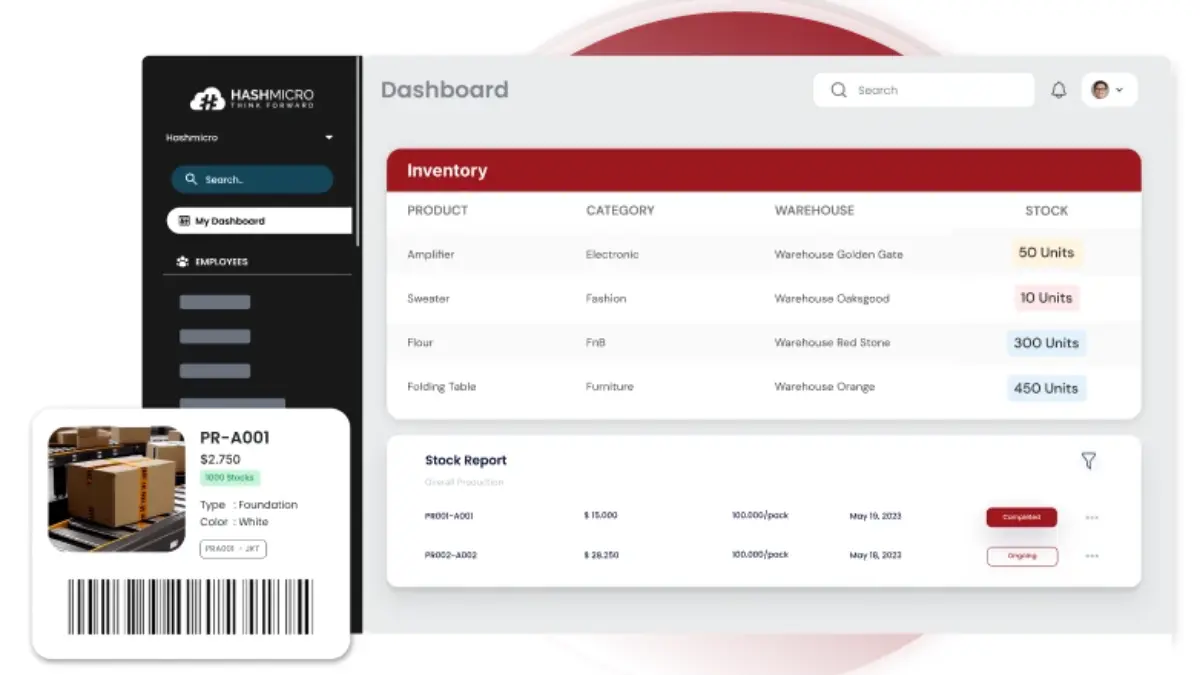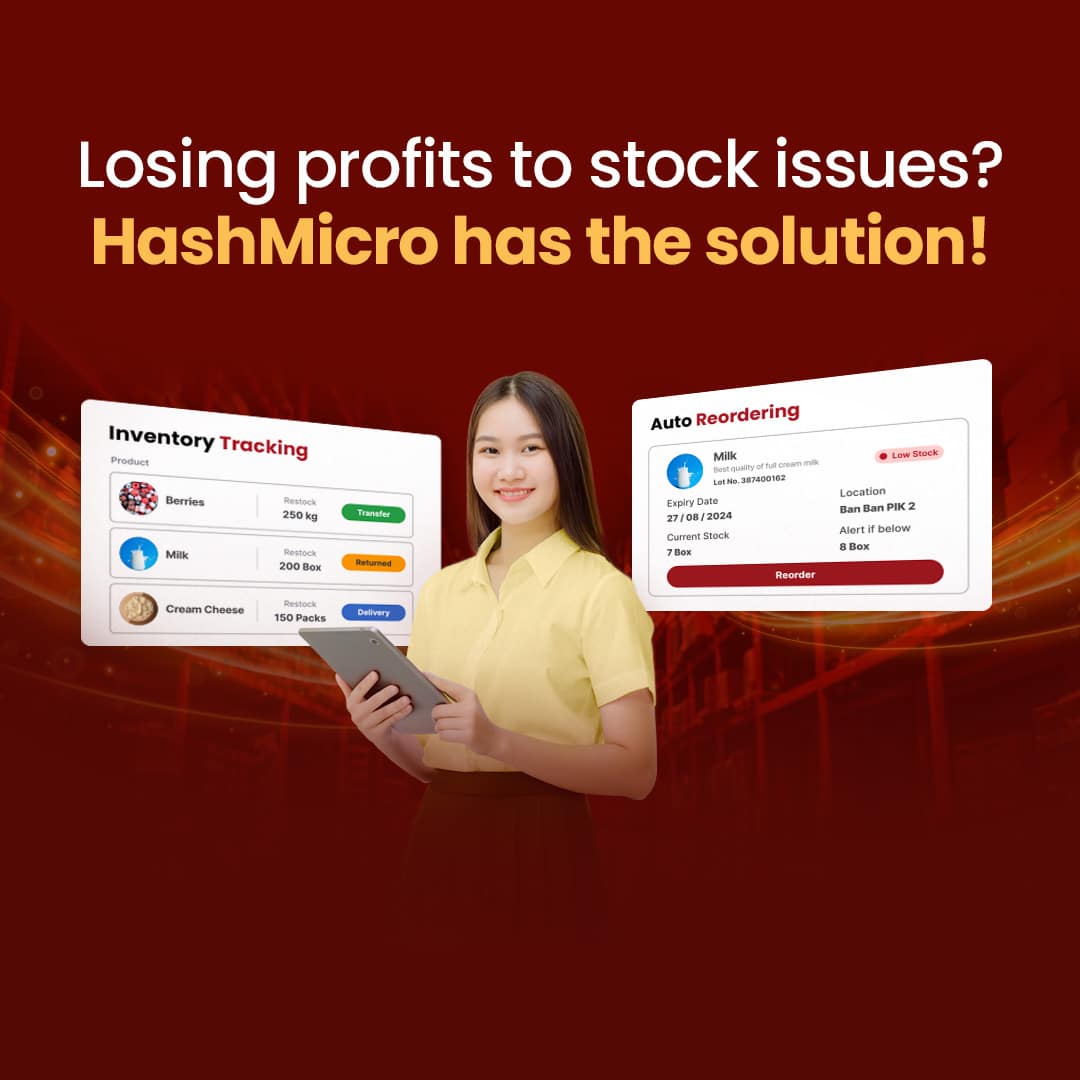In Singapore’s bustling retail landscape, retailers and suppliers must navigate the intricacies of consignment products. As the market evolves, integrating consignment items into one’s inventory may evoke a sense of concern.
Some of the most common issues with consignment products are that retailers often struggle to track unsold stock, ensure timely replenishment, and optimize space for slow-moving items. In addition, accurate reporting and managing financial risks due to unsold items further complicate the process.
In Singapore, a study by Enterprise Singapore highlights how effective consignment models can improve retailers’ cash flow, but only when managed well. Successful partnerships have shown that clear agreements and robust tracking systems are crucial to maximizing this approach.
Therefore, understanding the dynamics of this business model becomes crucial for those seeking sustainable growth and competitive advantage. This comprehensive article will explain consignment, its operational mechanics, and its significance in Singapore’s retail industry.

Table of Content:
Table of Content
Key Takeaways
|
What is Consignment Inventory?
Consignment inventory is a strategic arrangement where goods are entrusted to a third party for sale, with the consignor retaining ownership until sold. This allows retailers (consignees) to expand their product range while minimizing upfront inventory costs.
In a consignment product setup, the consignee agrees on a selling price with the consignor and receives a commission upon sale, thus creating a mutually beneficial relationship. This arrangement reduces financial risk for retailers and provides suppliers with increased market exposure without needing physical storefronts.
While consignment inventory offers significant advantages, managing it requires careful attention to detail. Retailers must effectively track inventory, monitor sales, and ensure timely payments, often relying on advanced warehouse inventory management software to streamline these processes, particularly in Singapore’s dynamic retail landscape.
How Consignment Inventory Works
The consignment model fosters a mutually beneficial relationship between consignors and consignees. Consignors, typically manufacturers or wholesalers, provide consignment goods to retailers on a consignment basis without requiring upfront payment.
This arrangement allows retailers to offer a broader product selection without significant capital investment, making it a popular strategy in Singapore consignment stores.
A contract in this consignment inventory system outlines terms such as the consignment period, pricing, and revenue-sharing. Retailers display this consignment of goods alongside their owned stock, selling to customers and sharing the agreed portion of proceeds with consignors.
This approach works well in fast-moving industries like fashion and technology, where trends evolve quickly, and consignment stock helps retailers keep inventory fresh.
Managing consignment inventory requires a strategic approach to tracking unsold products the consignor owns. Retailers pay only when items sell, reducing financial risk. Effective consignment product management involves regular communication, technology for accurate tracking, and clear agreements to ensure a smooth consignment process that benefits both parties.
Key Benefits of Consignment Inventory
Consignment inventory offers significant advantages for both suppliers and retailers, making it a highly effective business strategy. By adopting this model, companies can mitigate financial risks while expanding their market presence and product offerings.
Understanding the key benefits of consignment inventory will help businesses optimize their operations and drive sustainable growth.
- Reach new markets without extra costs: Consignment inventory allows suppliers to expand into new markets without investing in additional retail space or staff. By partnering with local retailers, suppliers can effortlessly reach new audiences.
- Test new products with minimal risk: Suppliers can introduce new products in unfamiliar markets through consignment, gaining valuable insights into product performance and customer acceptance without a significant financial commitment.
- Lower inventory holding costs: Suppliers avoid the costs associated with holding extensive inventories with consignment. Retail partners sell the products, reducing carrying costs and freeing up working capital.
- Reduced financial risk for retailers: Retailers benefit from consignment product by avoiding the financial burden of unsold stock. They only pay for goods once sold, helping lower financial risks and improve cash flow.
- Increased product variety: Retailers can diversify their product offerings without upfront costs, making attracting a broader range of customers easier. This flexibility allows them to stay competitive with current market trends.
- Improved sales opportunities: Consignment agreements increase the likelihood of sales by enabling retailers to carry a more comprehensive selection of products. This leads to higher customer satisfaction and more frequent purchases.
- No overstocking worries: Retailers can stock based on customer demand, eliminating the need for overstocking. This reduces storage costs and minimizes the risks of holding unsold products.
- Flexibility to return unsold goods: With consignment inventory, retailers can return them to suppliers, ensuring they aren’t stuck with non-moving products.
- Enhanced supplier-retailer collaboration: Consignment fosters more robust relationships between suppliers and retailers through ongoing communication and collaboration, ensuring mutual growth and success.
- Cost-effective business expansion: Consignment inventory provides a cost-effective way for suppliers and retailers to grow their businesses without the risks typically associated with high inventory investments.
Components of Consignment Inventory
Before exploring the key components of consignment inventory, it’s essential to understand how these elements work together to create a seamless operation. Each component plays a crucial role in ensuring the supplier and retailer benefit from the consignment model.
By clearly defining these components, businesses can optimize their processes and maximize the value of their consignment product arrangements.
- Agreement terms: A clear contract outlining the consignment period, pricing structure, and revenue-sharing model between the consignor and consignee. This ensures both parties are aligned on expectations and responsibilities.
- Inventory tracking systems: Efficient inventory management tools are essential for monitoring stock levels, sales, and returns in real-time. This helps the supplier and retailer maintain accurate records and optimize stock replenishment.
- Payment arrangements: Payment is typically made after the products are sold, reducing the retailer’s financial risks. The terms for payment and profit sharing must be agreed upon to ensure smooth financial transactions.
- Return and replenishment policies: Policies for returning unsold goods and restocking popular items help ensure efficient inventory flow. These guidelines prevent overstocking and ensure fresh, in-demand products are available.
- Communication channels: Regular communication between the consignor and consignee is vital for addressing stock levels, sales performance, and any potential issues. This ensures transparency and smooth operation throughout the consignment period.
Challenges and Considerations for Consignment Inventory
Before discussing the advantages and disadvantages of consignment inventory, it’s important to recognize the unique challenges and considerations associated with this model. While consignment product can be a highly effective strategy for suppliers and retailers, it requires careful management and clear communication between both parties.
Understanding these aspects will help businesses make informed decisions, fully leverage the benefits of consignment, and minimize potential drawbacks.
Advantages of consignment
Consignment brings numerous advantages to suppliers and retailers in the Singapore retail market. For suppliers, especially new entrants, it offers a chance to enhance brand visibility by showcasing products in retail spaces without needing their investment in marketing or retail space.
Additionally, valuable feedback from retailers and customers aids in understanding product performance and preferences. This approach also allows suppliers to manage inventory more effectively by placing products in multiple retail outlets, reducing the risk of overproduction.
On the retailer side, consignment product enables stocking diverse products without a substantial initial investment, providing a wider variety that caters to different customer tastes. The model allows for a fresh inventory and lowers the risk for retailers since products are not purchased upfront.
A well-managed consignment system thus creates a mutually beneficial situation for suppliers and retailers in Singapore, offering a flexible and risk-mitigated approach in the competitive retail market.
To better understand the advantages of consignment for both suppliers and retailers, here are the key points:
| For suppliers | For retailers |
| Market exposure | Reduced upfront costs |
| Reduced risk and investment | Flexibility and variety |
| Customer insights | Risk mitigation |
| Flexibility in inventory management | Enhanced customer attraction |
Disadvantages of consignment
While consignment product offers numerous benefits, it also presents challenges that both suppliers and retailers must consider. For suppliers, delayed payments until a product sells can strain cash flow. The success of a product hinges on the retailer’s sales proficiency, introducing uncertainty. The risk of damage or theft during the retailer’s possession poses potential losses.
On the retailer’s side, they face complexities in inventory management. This demands meticulous tracking and accounting for consigned goods. Furthermore, retailers grapple with limited control over consignment stock, potentially misaligned with customer demand. Devoting space and resources to slow-selling consignment products poses challenges for retailers.
To better understand the disadvantages of consignment for both suppliers and retailers, here are the key points:
| For suppliers | For retailers |
| Delayed revenue | Inventory management complexity |
| Dependence on retailers | Limited control over stock |
| Risk of damage or loss | Space and resource allocation |
Consignment Inventory Best Practices
Effective consignment inventory management is pivotal in Singapore’s retail sector, where efficiency and customer satisfaction are essential. Retailers must navigate the intricacies of tracking, selling, and reconciling consigned goods, which requires a robust system that ensures accuracy and transparency. Here are some strategies to effectively manage consignment inventory:
1. Implement an advanced inventory management system
Utilize software that precisely tracks consignment goods, differentiating them from owned inventory. This system should monitor sales, returns, and inventory levels in real-time, providing retailers with the data to manage consignment product efficiently.
One of the best inventory solutions for this purpose is HashMicro’s Inventory Management Software, which offers numerous benefits, such as:
- Effortless consignment activation: Seamlessly activate consignment features using HashMicro’s Inventory System configuration settings, ensuring a smooth consignment model process from start to finish.
- User-friendly consignment reception: Consignment stores can easily receive consigned stock through a user-friendly interface. This allows manual receipt creation and accurate tracking linked to supplying vendors. This is particularly valuable for Singapore consignment stores, which manage consignment inventory daily.
- Seamless sales process: Navigate the sales process effortlessly with HashMicro’s system, treating consigned stock like any other item for an integrated approach to selling consignment product.
- Traceability and reporting: Despite consigned products belonging to vendors, HashMicro’s Inventory System offers robust traceability and reporting features. Generate specific reports, such as stock on hand, to gain insights into the status and location of consignment goods at any given time.
- Enhanced product movement visibility: The Product Moves dashboard provides comprehensive insights into consignment stock movement. It helps you understand quantity, reference documents, and locations, enabling informed decisions throughout the consignment basis journey.
- Comparative analysis tools: Use reference points within the system for comparative analysis. Benchmark your consignment model against competitors, identifying areas for improvement and ensuring market competitiveness.
If you’re curious about the costs, click the image below to explore one of the best inventory solution pricing schemes tailored for managing consignment inventory.
2. Clear agreement on terms
An explicit agreement on consignment terms is essential for a successful partnership between consignor and consignee, mainly when dealing with consignment goods. Both parties must align on critical details, such as the pricing structure, duration of the consignment stock, and the handling of unsold items.
Transparent terms help prevent misunderstandings regarding the consignment of goods, ensuring smooth operations throughout the consignment period. A defined process also fosters trust and promotes a more efficient business relationship.
3. Regular inventory audits
Conduct periodic checks to ensure the physical inventory matches the recorded data. By implementing periodic checks, businesses can proactively identify discrepancies between what is physically present in stock and what is documented.
This proactive approach serves as a crucial preventive measure against potential losses, as it allows for timely error correction, minimizes the risk of stockouts or overstock situations, and ensures the accuracy of financial records. You can utilize an inventory management software for efficient and accurate inventory audits.
4. Efficient communication channels
Efficient communication channels are vital for the success of any consignment model. They ensure consignors and consignees stay aligned on key updates. Regular communication allows real-time information sharing, such as inventory status, sales performance, and potential issues.
Maintaining clear communication on a consignment basis in a fast-paced environment like a Singapore consignment store helps avoid misunderstandings and enhances collaboration. Keeping all parties informed ensures the smooth management of consignment inventory and fosters a more robust business relationship.
5. Staff training
Ensuring staff members are thoroughly trained in handling consignment products, from mastering sales techniques to efficiently processing returns, is essential. With the proper training, Singapore retailers can expertly manage consignment inventory, enabling precise stock tracking and streamlined operations.
This enhances operational efficiency and fosters more vital, trusted relationships with consignors, ultimately driving business success.
Optimize Your Consignment Product Management with HashMicro Inventory Solutions
HashMicro’s Inventory Management Software is recognized as one of Singapore’s leading solutions for consignment product management. This powerful software ensures optimal product management, making it an ideal choice for businesses seeking efficiency and reliability.
If you want to explore how this solution can benefit your business, consider signing up for a free demo with HashMicro’s professional team. They will guide you through the features and capabilities tailored to your needs.
Below are some of the key features offered by HashMicro’s Inventory Software:
- Consignment Stock Management: This feature allows businesses to efficiently track and manage consigned inventory, ensuring clear visibility of stock levels without upfront payments. With automated tracking, you can avoid stock discrepancies and optimize inventory turnover.
- Stock Forecasting: Stock Forecasting helps predict future inventory needs based on historical sales and trends, allowing for proactive restocking. This ensures your consignment products are always available to meet demand without overstocking.
- Consignment Management: Consignment Management provides complete control over consigned goods, allowing seamless tracking from supplier to sale. It ensures accountability and streamlines the consignment process, boosting business efficiency.
- Stock Reservations & Reporting: With Stock Reservations, you can allocate inventory for specific orders, while detailed reporting keeps you informed of stock movements. This feature ensures you have real-time data to manage your consignment products effectively.
- Lot & Serial Number Management: This feature enables tracking products through unique lot and serial numbers, ensuring full traceability and compliance with industry standards. It simplifies inventory audits and enhances product recall management.
- Stock Take and Inventory Adjustment Management: This feature makes it easy to conduct stock takes and adjust inventory levels, ensuring accurate stock data at all times. It minimizes discrepancies and improves inventory accuracy across your consignment stock.
- Inventory Operations Apps: This mobile-friendly solution allows you to manage your consignment inventory anytime. It streamlines daily operations with real-time updates, from stock tracking to order fulfillment.
- Replenishment Product with Multiple Actions: Automate your inventory replenishment process with multiple actions, ensuring your consignment stock is always optimal. It saves time and ensures uninterrupted stock availability based on demand.
- Stock Aging Report: The Report helps identify slow-moving consignment items by tracking how long stock has been in inventory. This insight allows for strategic decisions to clear aged stock and reduce holding costs.
- Return Management: This feature simplifies the returns process for consignment products, ensuring smooth and organized handling of returned goods. It enhances customer satisfaction and maintains inventory accuracy.
Beyond these features, HashMicro provides additional advantages, such as flexible customization to match your specific business requirements and seamless integration with third-party systems and software.
Conclusion
Consignment products offer a unique opportunity for suppliers and retailers in Singapore’s retail market. By understanding and leveraging this model, businesses can enjoy increased flexibility, reduced risk, and enhanced product variety. However, it’s essential to acknowledge the challenges and implement best practices for effective management.
For retailers and suppliers looking to explore consignment opportunities, HashMicro’s Inventory Management Software, one of the most well-known software providers in Singapore, provides innovative inventory management solutions tailored to the dynamic needs of Singapore’s retail landscape.
For further details, click the image below. Experience the future of retail with a free demo of HashMicro’s warehouse inventory solutions today!
Frequently Asked Questions About Consignment Product
-
What are examples of consigned goods?
Examples of consigned goods include artwork, handmade crafts, and specialty products where suppliers provide items to retailers for sale.
-
What is the difference between resale and consignment?
Resale involves purchasing items outright for later resale, while consignment involves selling goods on behalf of suppliers, with payment to the supplier made after the items are sold.
-
What items sell best on consignment?
Products that sell best on consignment are often those in demand, unique, or niche, ensuring a steady flow of customers attracted to the diverse inventory offered by retailers.
-
What are some challenges of consignment for retailers?
Challenges include managing complex inventory, limited control over stock, and allocating space and resources for consigned goods.
-
Can consignment work for all types of products?
While consignment can be versatile, it works best for products that are in demand, unique, or niche, and where quality can be assured.








































